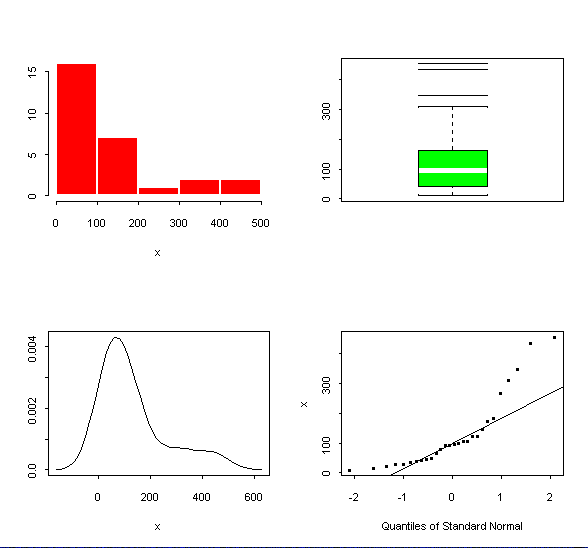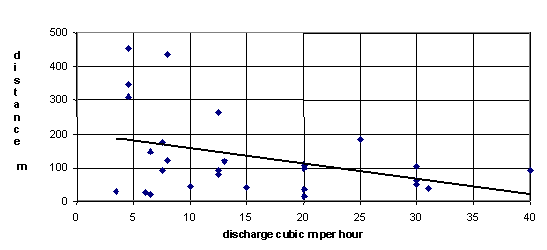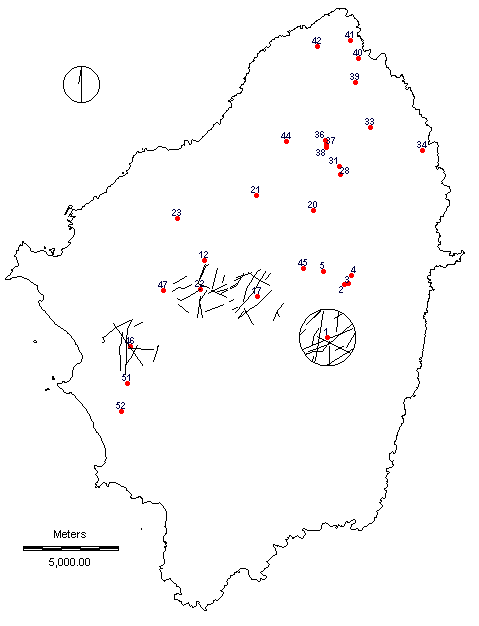For each one of the 28
springs the distance to the nearest lineament was calculated and
also the frequency, density, average length, angular atypicality, relative
entropy and the number of different orientation classes of the lineaments
that occurred within a 1500m radius of the spring coordinates.
The map above shows the circular
area or neighborhood of spring with id 1 and the lineaments occurring within
it.
The table shows the information
calculated for each one of the 28 springs.
The data were analyzed, and in
addition to the statistical tests, scatter plots, diagrams and rosediagrams
were generated to present the data graphically.
From these tests it appears that
there is a significant relationship between increased spring yield and
short distances of separation from
a lineament,
low relative entropy and
small number of different orientation
classes occurring within the neighborhood of the spring.
|

Exploratory statistical analysis of the data referring
to each spring's distance of separation from nearest remote sensed lineament.

Scatterplot of discharge against distance
of separation
|

